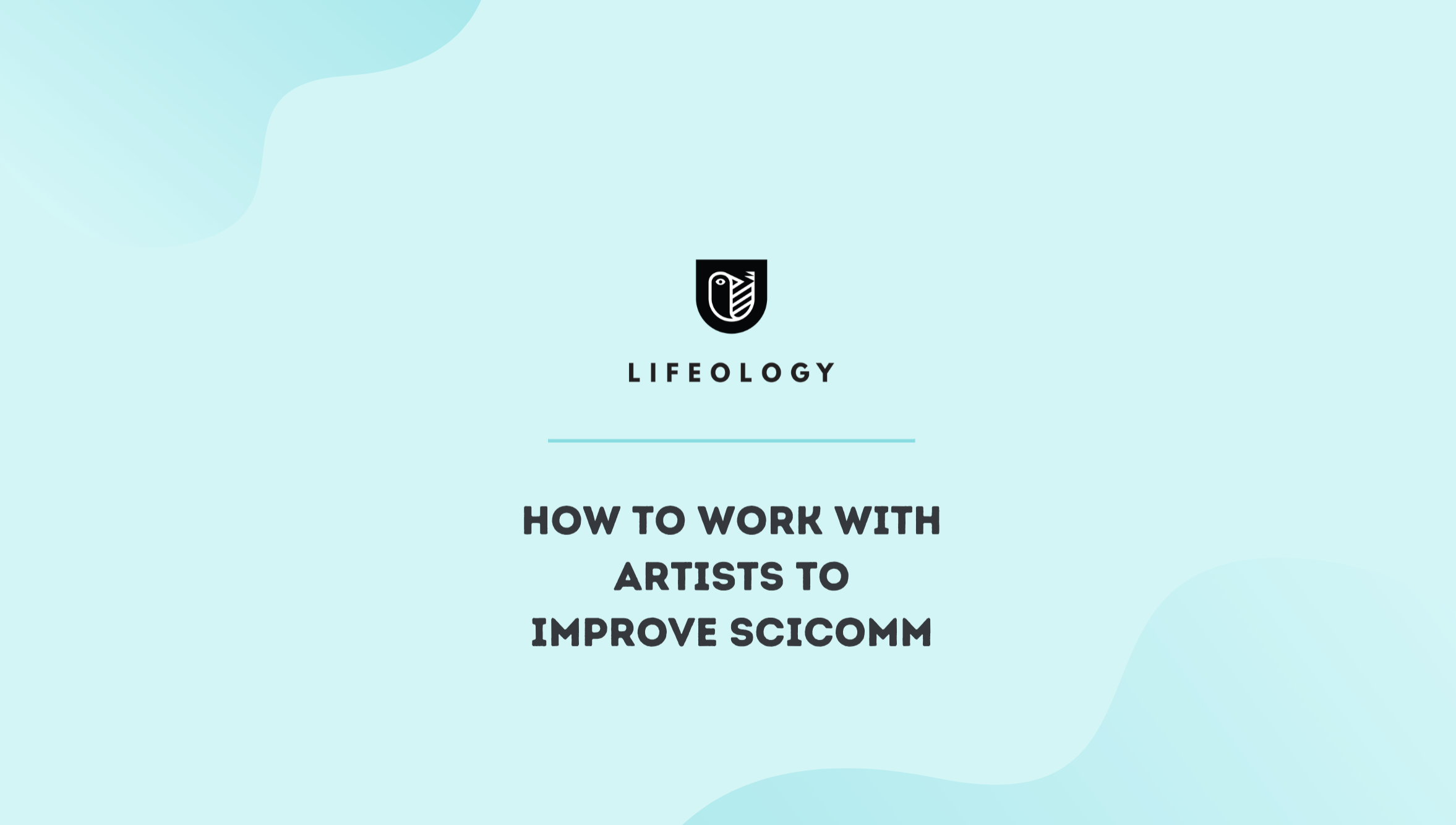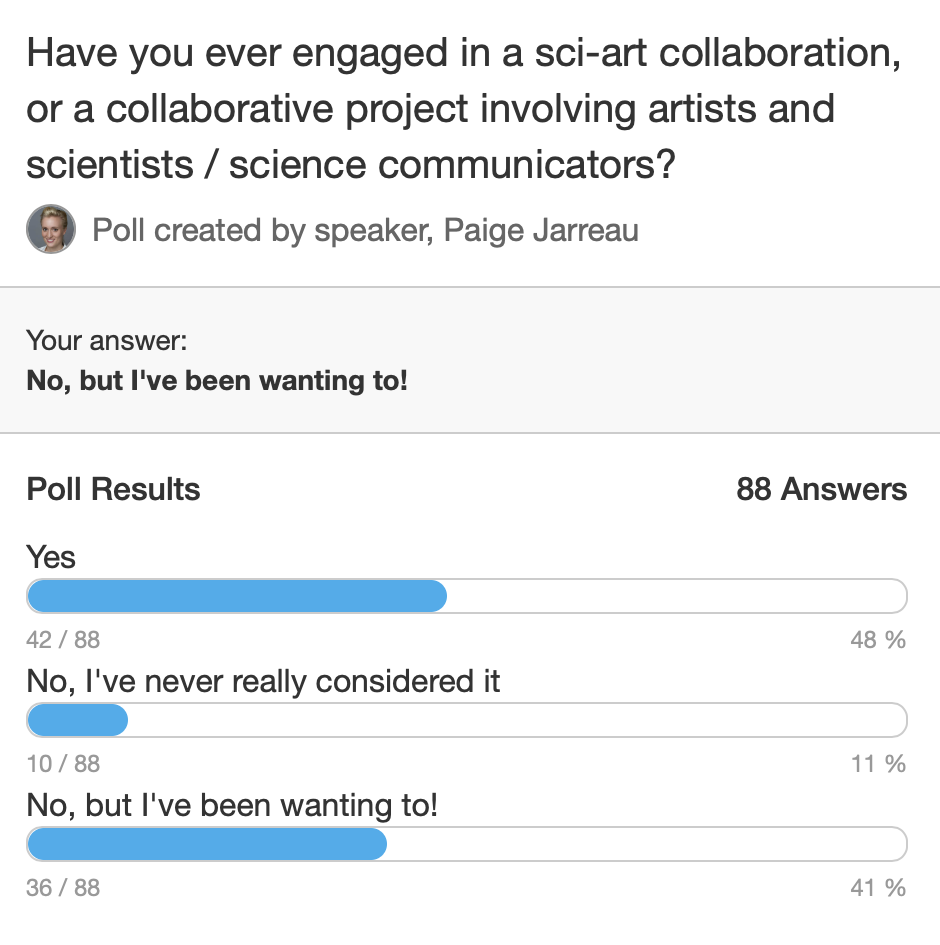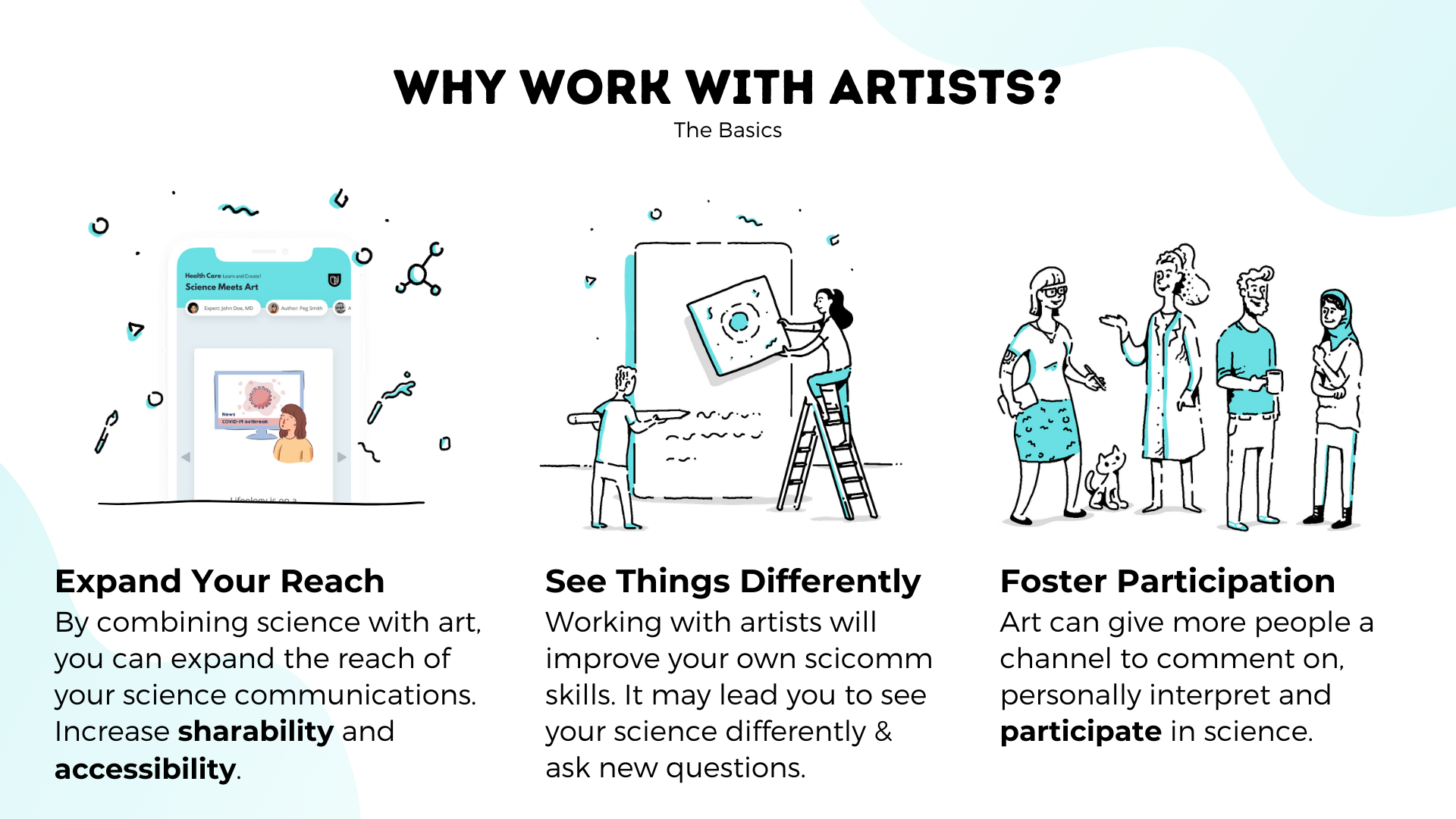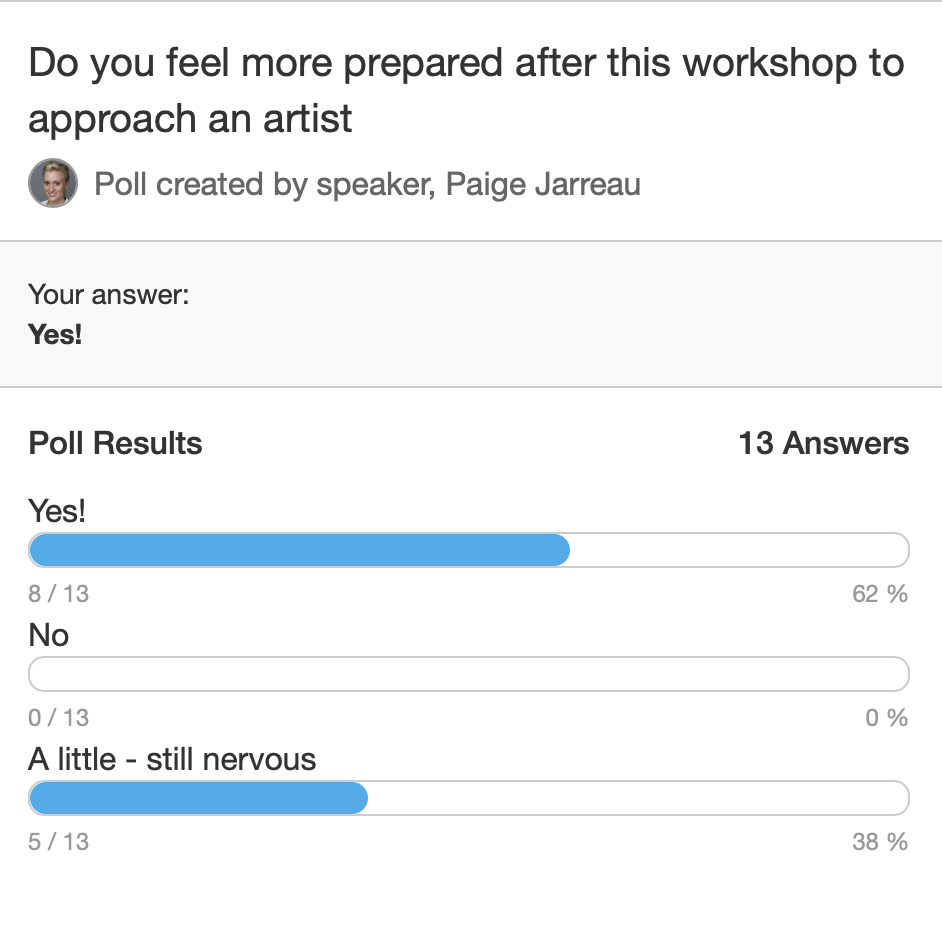
At the annual Science Talk conference, a conference for science communicators, Lifeology presented a workshop titled “How to Work with Artists to Improve SciComm.” The session was presented by Paige Jarreau, Lifeology’s co-founder, and Jessika Raisor, an educational animator who has worked on several Lifeology projects.
Jessika was actually part of the winning trio for our September 2020 Sci-Comm Challenge, which was centered around SciArt collaborations. She teamed with a musician and a PhD student studying animal migration. The focus of the project was humpback whales in the Northeast Atlantic, and below is an animation of a drawing of a humpback whale swimming across the screen. You can find out more about that project and see other examples of SciArt collaborations in this blog post.
In the Science Talk 2021 workshop, participants learned more about what SciArt is and how they might incorporate it into science communication activities and prepare for successful SciArt collaborations. If you’re not sure what SciArt is or how it could help communicate about science, that’s okay! Our Lifeology courses are full of examples of SciArt that may help you get a better idea of how visuals enhance your communication by engaging viewers, communicating additional details, and helping people connect with science in a fun and different way. If you continue reading, you’ll find out what that looks like and why it’s so benfecial.
For participants to understand and be familiar with what a typical SciArt collaboration looks like, the workshop tackled a lot of topics such as time commitment, budgets, artist contracts, and the art creation process. Paige and Jessika wanted participants to walk away from the workshop feeling comfortable entering into a collaboration.

Many of the workshop attendees had participated in SciArt collaborations before or they have been wanting to—48% said they had, 41% said they had not but have been wanting to, and 11% said they had not and never considered it.
According to the discussion in the chat, these collaborations have taken many forms. One participant invited artists into the science labs at their college and many of the artists created new work, which the college then held an art exhibit to showcase. Another participant was a former K-12 educator who frequently used SciArt projects to engage students with STEM. Another participant had done several Science Cafe-style events on Music and the Brain. These events involved a neuroscientist and musician on stage performing a sing-along with the audience.
“It is intimidating at first but almost always fruitful in ways that I could never expect! I always learn more about how people approach their science differently,” Julia Pollack wrote in the chat about participating in SciArt collaborations.
During the workshop, Paige and Jessika talked briefly about reasons why working with artists is beneficial for scientists. An artistic collaboration process can expand the reach of science, foster participation, and even help scientists to see their work and results in a new light!

They also chatted about how to budget for SciArt, where to find artists, and how to prepare for a successful collaboration (which includes, most importantly, keeping an open mind!) Although it was only briefly touched on in the presentation, a contract is also another important component of a creative collaboration. You can find out more in one of our blog posts.
It is important to pay artists for their time. Worried about funding? You’re not alone. A quick poll of participants at the workshop revealed that funding was the number one reason holding people back from entering a SciArt collaboration. It is important to pay artists for their time. Some ideas for where to find funding include asking your university / department for support, industry sponsorships, grants and micro-grants, crowdfunding, and private donations. Places like the Alliance for the Arts in Research Universities, Sloan Foundation, SciCommMake, art councils, and state arts agencies may also be great places to start.
From an artist’s perspective, Jessika talked about things to keep in mind when entering a collaboration. She said that taking the time to brainstorm and establishing a channel for timely and frequent communication is important.
She also addressed some common mistakes and misconceptions. First, don’t assume a baseline knowledge from the artist–just ask and communicate with them throughout the process. Additionally, a science or a science communication background as an artist is a plus, but it is not required. The artist serves as a great first audience member no matter their background.
“I see myself as the audience and I hone in on what is important. Every piece of art cannot convey every little facet of research.” – Jessika Raisor
Lastly, don’t try to control the final artistic format. Instead, as a collaborator, it is crucial that you make sure the artist has not misrepresented anything. Jessika emphasized that all the effort will be worth it in the end for everyone involved!
To pull it all together, Paige and Jessika presented an example collaboration process. It is important to remember that every collaboration looks different, but some steps that may be involved include:
- Introductory meetings
- A creative brief to cover goals, audience, format
- Contract creations
- Sketching
- Reviews and fact-checking
- X rounds of changes
- Testing/audience feedback
- Final full-color illustration
Finally, Paige and Jessika led workshop attendees through a series of discussion prompts and activities to get people thinking about audiences, goals, formats and other criteria for potential future SciArt projects!
In the chat, participants had several goals for potential SciArt collaborations.
“My goal for a sciart collab is helping scientists come out of the ivory tower and be less scary to us normals. Artists are a great way to bridge that gap and build trust with the science community” – Sky Hatter, a workshop participant
Many participants mentioned that they wanted to inspire curiosity, build trust, or make science more fun. Some ideas in the chat about specific collaborations included:
“I study earthquakes and I would love there to be nicer, less clinical graphics describing how to stay safe in specific scenarios during an earthquake” – Sarina Patel
“I study circatidal rhythms in fiddler crabs – an animation showing how they move in and out of estuaries would be so useful!” – Caitlin BrabbleRose
You can find artists on social media using hashtags such as #SciArt or by following artist accounts. At Lifeology, we have a member directory that includes hundreds of artists who are eager to work with scientists and other scicommers.

Other online artist networks include Guild of Natural Science Illustrators, SciArt Community Network, Women Who Draw, Latinx Design Directory, and many more!
Main Takeaways:
- Art is a great way to help your audience understand and form different perspectives about science.
- Using art to help communicate science can expand your reach and increase accessibility
- Budget and timeline are key things to consider for any SciArt collaboration. Pay artists for their talent! Work with them to settle on a project timeline that fits both of you.
- The more feedback you can give artists in the early stages of the process, the more time it will save down the line. It is easier for an artist to change a sketch than a completed project.
- Trust the artist that you’re working with as an equal collaborator. Sometimes, the artist is closer to the audience’s mindset and may be able to help identify what misconceptions there might be about the research.
- Have an open mind when entering a SciArt collaboration. It may go in a different direction than either of you imagined in the beginning, but it is worth it in the end!
Further Reading:
- 10 things about the creative process that no one tells you
- Valuing Science Art Collaboration! A Q&A with SciArtists
- We can’t relate to your science. Here’s how to fix that.
- Why Should Scientists Work with Artists?
- What scientists should keep in mind when working with artists and storytellers
- Budgeting for arts and communications in scientific grants




